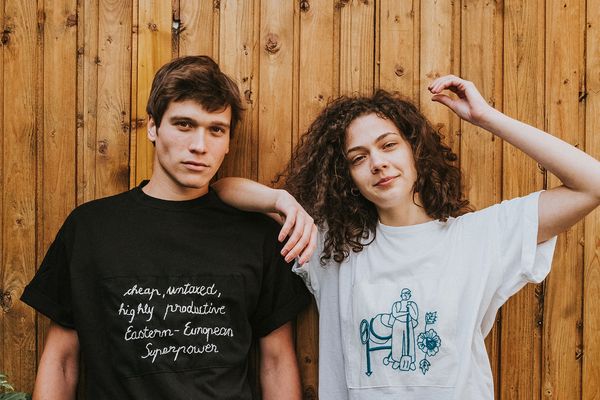In 2019, eight young designers and design theorists could participate in the six-month Moholy-Nagy László Design Grant, managed by the Hungarian Design Council and financed by the Hungarian Intellectual Property Office and the Ministry of Human Capacities. In the course of the program, the grantees could implement their self-developed projects or projects developed in collaboration with manufacturers. Learn more about them here, on HYPEANDHYPER. Zsófia Lévai – ROMP – Extended perception in interactive gaming spaces
Unfortunately, the exhibition presenting the works of the grantees scheduled to the end of March was cancelled due to the coronavirus epidemic. As a way of making up for this event and complementing the remarkable catalogue already published or “making it more alive,” we will present you their projects in the next eight weeks.
Zsófi Lévai designed soft interfaces that may serve as the new means of communication of the future. With her interactive knitted clothing line (INTERKNITTING) developed in the framework of her diploma project at the Department of Textile Design of Moholy-Nagy University of Art and Design, she won the Central-European clothing design competition Gombold újra! in 2017.
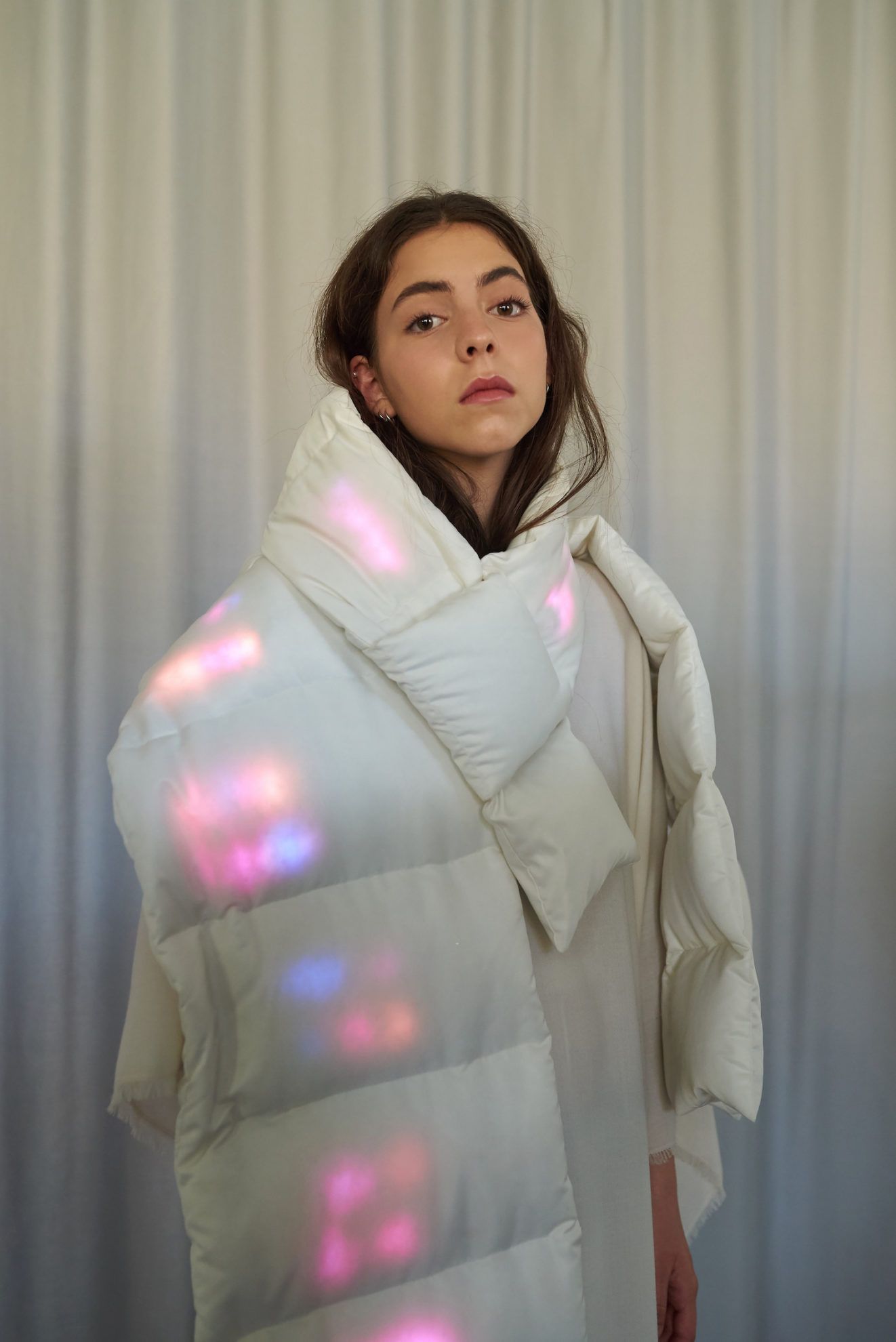
“I was raised in a family of engineers: my grandmother is an electrical engineer, while my mother is a computer programmer mathematician. I have been intrigued by arts since I was very little, and then later I was driven to the fashion industry by my teenage rebellion against engineering, and finally I established my own fashion brand. However, I soon felt that it wasn’t enough for me. This urged me to experiment with various materials and LED lights, amongst others. It felt like I found a way back to my roots during this explorative work. This further assured me that I needed to work with my mother; she programmed the prototypes. She has been designing the system architecture of our projects ever since, and in the meantime, two other talented software developers and a media designer also joined our team” – the designer told us.
After the first successes in Hungary, Zsófi could develop her second collection (POWER OF PROXIMITY) in Berlin, in the framework of the Deutsche Telekom Fashion Fusion program. In this project, she focused on sweaters communicating with each other. Since then, she has been invited to speak at major international fashion-tech conferences, as a result of which Zsófi could present her extraordinary collections in Singapore and New York, too.
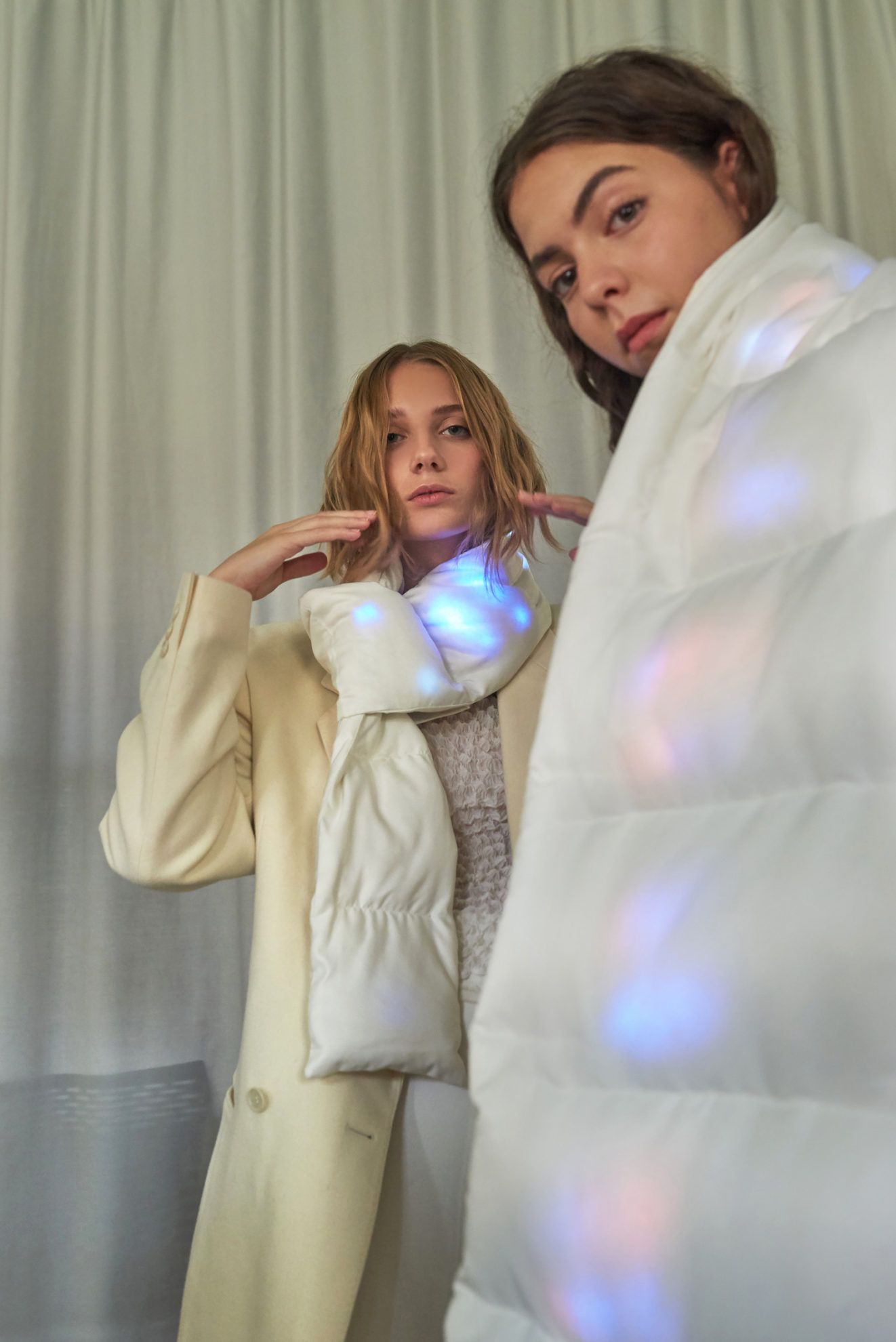
It’s very important to work in a team
Zsófi wanted to continue experimenting on this field, and felt that the Moholy Grant was a perfect opportunity for getting feedback and guidance in relation to her work from many experts with various backgrounds.
“This is not a bug, it’s a feature – this is the philosophy I acquired in the past period. If one works in a big team where people are building on each other’s work, hardships are inevitable. Especially if we combine two completely different fields such as IT and clothing design. The grant provides an excellent framework and support also for establishing a good team, so I would definitely encourage everyone to apply” – Zsófi told us.
In the meantime, in the fall of 2019, Zsófi could present her project to a group of experts at the event of T-Systems Hungary Symposium, where she received quite positive feedback. She is already working on her next project, which is now through the first round with a venture capitalist.
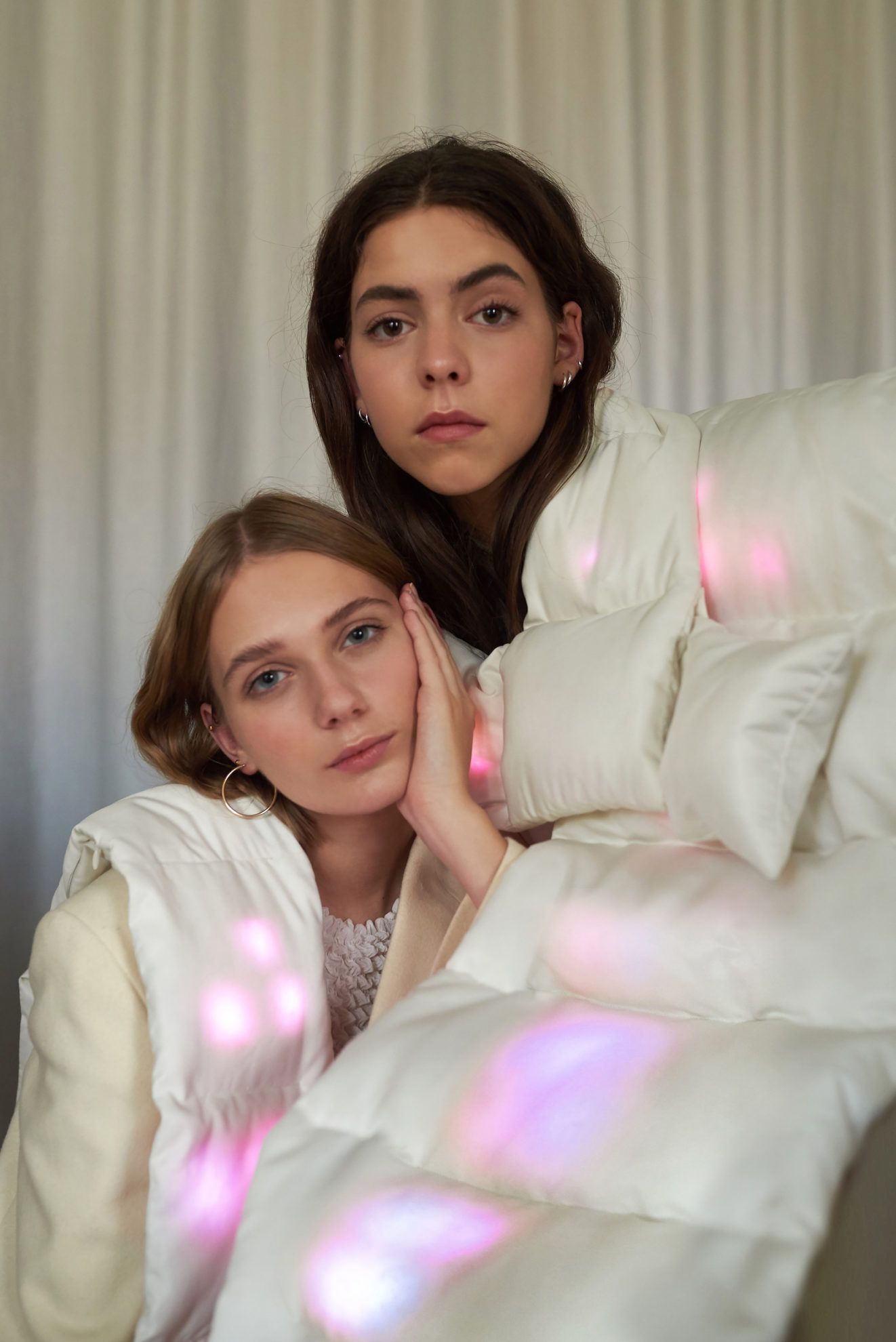
The project – ROMP – Extended perception in interactive gaming spaces
With the ROMP project, Zsófia Lévai set out to create an interactive collection leaving the theoretical realms of research behind. The scarves of the collection lure their wearers back into the offline space and encourage new methods of building relationships by transferring codes used in online spaces into reality.
“We code a part of the real meaning of our message with meta communication, but many of it gets lost through new media channels. Our message is becomes a whole with the information of how close we are to each other, what gestures we use and what our facial expression, intonation or body language are like. The content alone can have various meanings without the corresponding emojis. Isn’t it right? This is where my scarves enter the picture” – the designer told us.
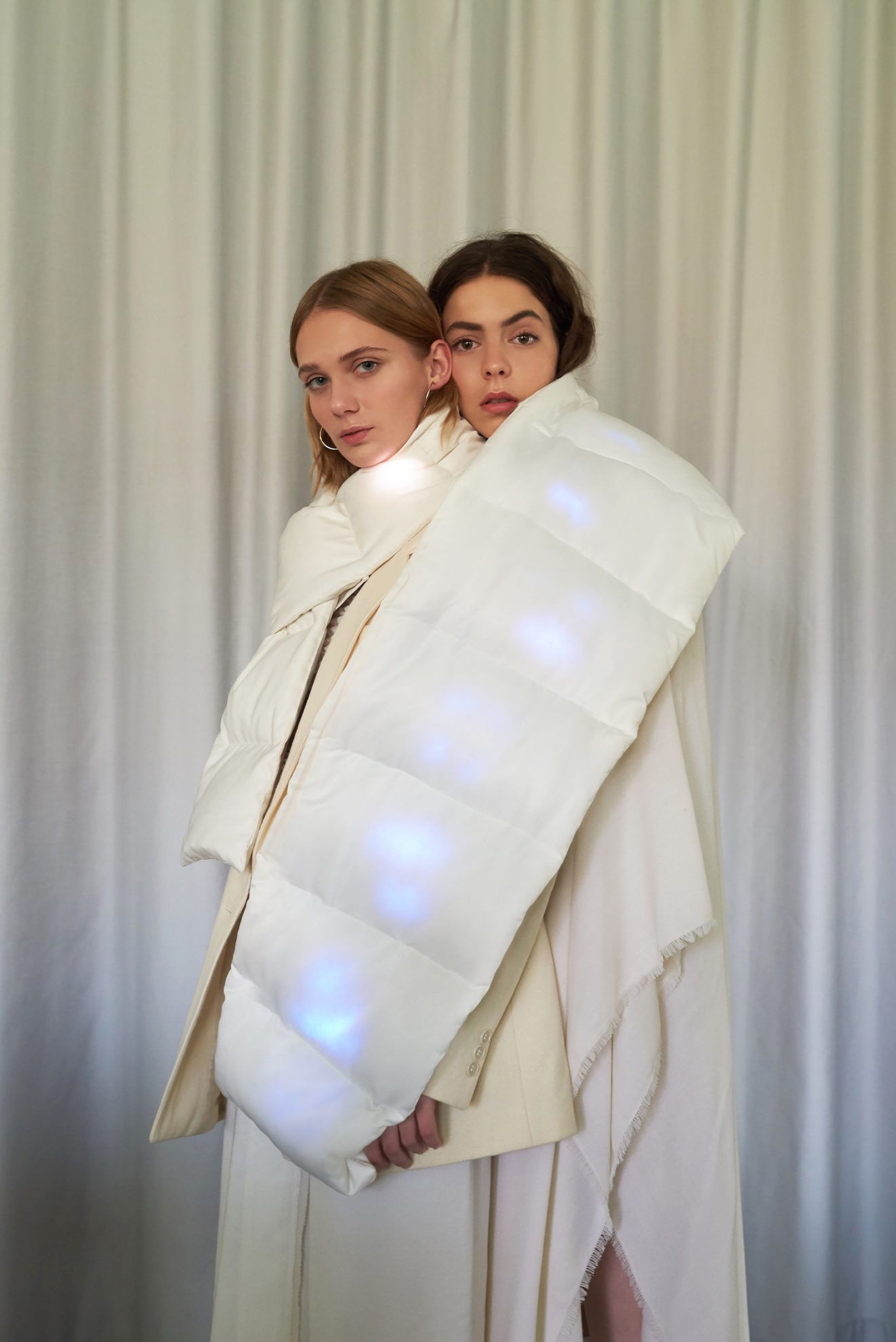
The five different scarves making up the collection can interpret the motions of their wearers linked up to a network through a special server. Operating on the principle of wave interference, the scarves can communicate with each other and thus establish initial contact between the wearers – the rest is up to us.
In the framework of the grant, the designer studied the technology required for her project (sensors, microcontrollers, LED-lights and power supply units) and then experimented with their placement. She carried out several textile experiments to satisfy the requirements of weight distribution, ergonomy, wearability and functionality, and did extensive modelling before she created the final collection. The grantee envisions this collection as a basic tool for further experiments in interactivity.
Photos: Anett Pósalaki
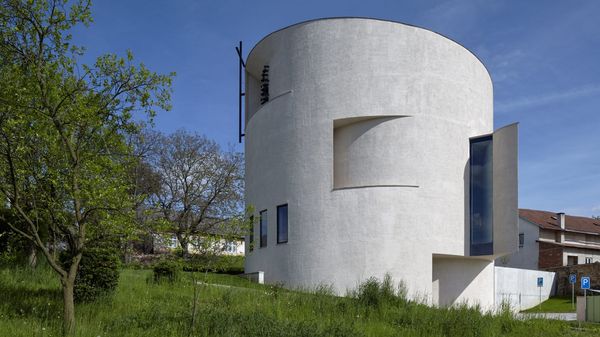
Contemporary chapels

HYPE’s online store has officially launched!
